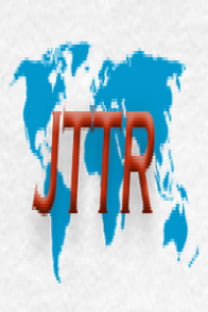Application of Weberian Concept to study the impact of cultural tourism in Local Community Development
Cultural tourism provides a promotional platform for the cultural and artistic traditions of any country. However, its contribution to employability and income is not optimally justified. The overarching research question is - in what ways the application of the Weberian concept would impact cultural tourism in local community development? The theoretical framework underpinning this study is the Weberian concept of formal and substantive rationality. Here, formal rationality is based on economic goals only, whereas substantive rationality relates to non-economic social goals such as improved quality of life and culture preservation. In this study, a qualitative cross-case analysis was adopted on two craft villages of Jharkhand, India. The results indicate the Weberian framework is a useful device for identifying the moderating effect of cultural tourism in local craft promotions and local community development.
Anahtar Kelimeler:
Community Development, Culrural Tourism, Sustainable Development, Culture Preservation
___
- Bender, E., (1986). The self-help movement seen in the context of social development. Journal of Voluntary Action Research, 15(2), 77–84.
- Choudhury, N. G., (2012). NGO revives tribal art . Calcutta.
- Christenson, J., Fendley, K., & Robinson, J. J., (1989). Community development. In J. Christenson, & J. Robinson, Jr (eds) Community Development in Perspective. Ames: IA: Iowa State University Press.
- Cohen, J., & Uphoff, N., (1977). Rural Development Participation: Concepts and Measures for Project Design, Implementation, and Evaluation . Cornell University, Rural Development Committee, Center for International Studies, Ithaca, NY.
- Denzin, N. (1984). The Research Act: A Theoretical Introduction to Sociological Methods. New York: McGraw-Hill.
- Denzin, N., & Lincoln, Y., (1994). Handbook of Qualitative Research. Thousand Oaks, CA: Sage Publications.
- Falk, J., (1975). Cooperative Community Development (A Blueprint for our Future). Shawnee Mission, KS: The Future Associates.
- Flora, C.B., and Flora, J.L., (1993). Entrepreneurial Social Infrastructure: A Necessary Ingredient. Annals, APSSA 529, 48–58.
- Government of India. (2011). Census of India. Government of India.
- Goverment of Jharkhand. (2019). Deuridih Rural Tourism. Retrieved November 15, 2019, from Jharkhand Tourism : https://jharkhandtourism.gov.in/destinationDetails/86.
- Hammer, T., & Stern, R., (1980). Employee ownership: Implications for the organizational distribution of power. Academic Management Journal , 23, 78–100.
- Hansen, P.R. & Jangeresyed, S., (2013). Review of China's Outbound Travel Market 2013, Perspectives for Scandinavian City Tourism. Wonderful Copenhagen Research and Development, Chinavia Project. Available from: http://www.visitcopenhagen.com/ accessed on 13/70/20.
- Harcourt, W., (1994). Feminist Perspectives on Sustainable Development. London and New Jersey: Zed Books Ltd.
- Kotze, D., (1987). Contradictions and assumptions in CD. Community Development Journal, 22(1), 31-35.
- Karoubi, M., Banikamali, S. & Moradi, H., (2012). Analysis of Tourists Path in Tabriz Traditional Bazaar. Iranian Journal of Management Studies Tourism, 7(19),91- 116.
- Littrell, D., & Hobbs, D., (1989). In J. C. Robinson, The Self-help Approach in Community Development in Perspective. Ames: IA: Iowa State University Press.
- Moye, A., (1993). Mondragón: Adapting co-operative structures to meet the demands of a changing environment. Economic and Industrial Democracy, 14, 251-276.
- McGehee, N. G., & Meares, A. C., (1998). A case study of three tourism-related craft marketing cooperatives in Appalachia: Contributions to community. Journal of Sustainable Tourism, 6(1), 4-25.
- Nagaraju, L., & Chandrashekhara, B., (2014). Rural Tourism and rural development in India. International Journal of Interdisciplinary and Multidisciplinary Studies (IJIMS), 1(6), 42-48.
- Negi, J. M., (1990). Tourism development and nature conser-vation. New Delhi: Metropolitan Publishers.
- Oh, Y.J., (2007). An Exploration of Tourist Shopping. Texas, US: Submitted to the Office of Graduate Studies of Texas A&M University in partial fulfilment of the requirements for the degree of Doctor of Philosophy, August. Available from: http://repository.tamu.edu/ Accessed on Monday 13/70/20.
- Patton, M., (1980). Qualitative Evaluation Methods. Beverly Hills: Sage.
- Rahman, M., (1993). People’s Self-Development: Perspectives on Participatory Action Research — A Journey Through Experience. London and New Jersey: Zed Books Ltd.
- Reinharz, S., (1992). Feminist Methods in Social Research. New York: Oxford University Press.
- Roth, G., & Wittich, C., (1978). Max Weber, Economy and Society. Berkeley and Los Angeles : University of California Press.
- Savage, J., & Volkin., D., (1965). Cooperative criteria. . Washington, DC.: Farmer Cooperative Service Report 71.
- Saghaei, M.,Mafi, E. & Ghahfarokhi, Z. J., (2012). Analysis of the Role of Shopping Centers in Relation to Tourism and Pilgrimage in Metropolises (Case Study: Mashhad). 2nd Year, Arid Region Geographical Studies, No.7, pp. 77-10.1.
- Swanson, K. K., (2004). Tourists' and retailers' perceptions of souvenirs. Journal of Vacation Marketing 10(4), 363-377.
- Swanson, K.K. & Timothy, D.J., (2012). Souvenirs: Icons of meaning, commercialization and commoditization. Tourism Management, 33(3), 489 -499.
- Seitz, V., ( 1995)., Women, Development and Communities for Empowerment in Appalachia . Albany: State University of New York Press.
- Taylor, P., (1994). The rhetorical construction of efficiency: Restructuring and industrial democracy in Mondragón, Spain. Sociological Forum , 9(3), 459–89.
- Varutti, M., (2015). Crafting heritage: artisans and the making of Indigenous heritage in contemporary Taiwan . International Journal of Heritage Studies, 21(10), 1036-1049.
- Vasheghani‐Farahani, F., Esfandiar, F., & Tajzadeh‐Namin, A., (2014). Enlightening Tourism. A Pathmaking Journal, 4(2), 147-167.
- Whitford, M., & Ruhanen, L., (2010). Indigenous Tourism Businesses in Queensland: Criteria for Success. In CRC for Sustainable Tourism. Gold Coast.
- Zurick, D. N., (1992). Adventure travel and sustainable tourism in peripheral economy of Nepal. Annals of Association of American Geographers, 82(4), 606-628.
- ISSN: 1302-8545
- Başlangıç: 2018
- Yayıncı: Adnan Menderes Üniversitesi
